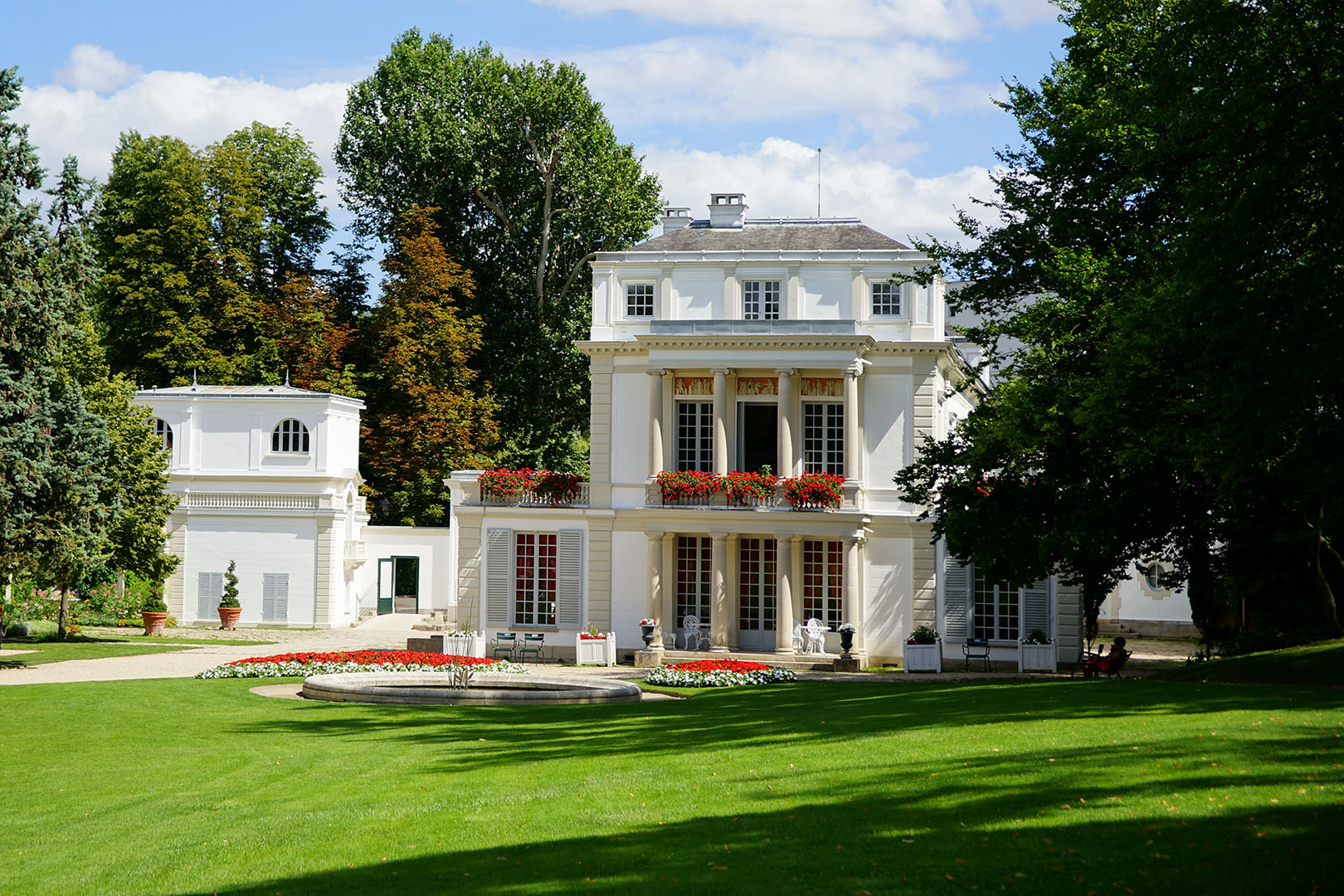Centre Pompidou: Pioneering Paris
Text: Lisa Gerard-Sharp | Photos © Centre Pompidou

Set in the heart of Paris, the Centre Pompidou is itself a beating heart of contemporary culture, even beyond French borders. An iconic, inside-out building houses Europe’s largest collection of modern and contemporary art. The Centre, dedicated to all forms of visual culture, celebrates art, design, architecture, photography and cinema and you’ll inevitably find yourself admiring its pioneering spirit, must-see exhibitions and increasing international swagger.
“Everything you can imagine is real,” declared Picasso – an edict the Centre Pompidou would seem to endorse in this palace of dreams. This radical, high-tech, all-exposed building looks just as cutting-edge as when it was created, back in 1977, by superstar architects Richard Rogers and Renzo Piano.
This Parisian landmark is famous for its colour-coded symbolism, with yellow translating as circulating electricity, green for water, and blue for air conditioning. Such daring verve is written into the DNA of the building and colours its collections, its multidisciplinary approach and its desire to reach diverse audiences.
Where all art forms meet
The public spaces in front of this bold building attract performance artists and crowds of onlookers: all part of the inclusive appeal of Centre Pompidou. If the building is playful, pioneering and futuristic, then the Pompidou philosophy infuses the spirit of the building. A multidisciplinary remit means that the mission is to educate, enlighten and entertain, mostly with a light touch.
With its vast central lobby, rooftop restaurant, design bookshop and library, visitors can see an exhibition, browse for books, catch a concert, or make a beeline for a bird’s eye view of Paris. Despite the significance of the permanent collections, much interior space has been freed up for exhibitions and events. The huge range of events strays into the fields of music, dance, theatre and performance art, along with regular conference series. Films, meanwhile, delve into the cultural overlap between different disciplines and the visual arts.
The Pompidou can cater to all ages and tastes and family activities provide endless ways to explore modern art and contemporary culture. Progressive, accessible, democratic and unintimidating, the Centre Pompidou draws visitors from a huge variety of cultures and walks of life, but not by dumbing down.

Left: Dora Maar, Mannequin-étoile © Adagp, Paris, 2019. | Right: Joan Miro, Peinture © Succession Miro/Adagp, Paris 2019 Philadelphia Museum of Art, A.E. Gallatin Collection
Cultural powerhouse
Exhibitions aim for excellence and live up to France’s reputation for intellectual rigour in the visual arts. As home to the National Museum of Modern Art, the Pompidou is renowned for its rich 20th- and 21st-century art collections. Presented chronologically, from 1905 onwards, the museum traces pioneering art movements, ranging from Fauvism, Cubism and Surrealism to Pop Art.
The core collections include masterpieces by such luminaries as Picasso, Matisse, Modigliani, Braque, Chagall, Miró and Kandinsky. The contemporary period, from 1960 to the present day, meanwhile, covers greats such as Francis Bacon, Mark Rothko, Andy Warhol, Niki de Saint Phalle, Yves Klein and Anish Kapoor. Enriched by private donations, the museum is still at the cutting edge of contemporary art.
Underlining the depth and eclecticism of the Pompidou are the additional collections, which appeal to differing tastes. The graphic art collection, with works by Chagall, Matisse and Miró, vies with the photographic collection, featuring masterpieces by Man Ray and Henri Cartier-Bresson.
Design fans might prefer the design section, with creations by Eileen Gray, Ettore Sottsass and Philippe Starck, while film buffs head to the cinema collection, which runs from cinematic history to film installations.
Tempting temporary exhibitions
In addition to the permanent collections, regular blockbuster exhibitions bring extra novelty to visiting art-lovers. This summer, Prehistory, a Modern Enigma, delves deep into the mythology we have created around this murky period, lost in the mists of time. Seen through the haunted eyes of artists such as Picasso, Cézanne and Louise Bourgeois, Prehistory reveals primeval fears around our origins.
Exploring an entirely different area, an exhibition on Dora Maar (1907-97) is the biggest ever French retrospective of this French photographer-painter’s work. Often sidelined as Picasso’s muse or treated as the free-spirited poster girl for the 1930s, Dora Maar deserves her place in art history, as does the Pompidou itself.
Conceived of as a national institution for culture and the arts, the Centre Pompidou still cultivates global ambitions. As the inspiration for a new generation of museums and multi-tasking cultural hubs, the Pompidou continues to attract new fans. The Parisian powerhouse now boasts cultural outposts outside Paris, from Metz to Malaga, with a new outpost due soon in Shanghai – the museum’s first foray outside Europe.
The Centre Pompidou is a cultural beacon for our times, quintessentially Parisian yet with an increasingly global vision. Curiously, one of the most provocative buildings of the 20th century remains at the heart of Parisian life in the 21st century. Art fans can take in an exhibition, head to the rooftop and, with a cocktail in hand, watch the light dance over the Eiffel Tower and the Sacré Coeur. This could only be Paris, timeless yet in touch with its times, much like the Centre Pompidou itself.

Left: Robert Delaunay, Manège de cochons © Bertrand Prévost, Centre Pompidou, MNAM-CCI /Dist. RMN-GP | Right: La Vénus d’Amiens, Bertrand Lavier © Bertrand Lavier, Adagp – Paris
Web: centrepompidou.fr/en Facebook: centrepompidou.fr Twitter: @CentrePompidou Instagram: @centrepompidou WeChat: @centrepompidou
Subscribe to Our Newsletter
Receive our monthly newsletter by email





